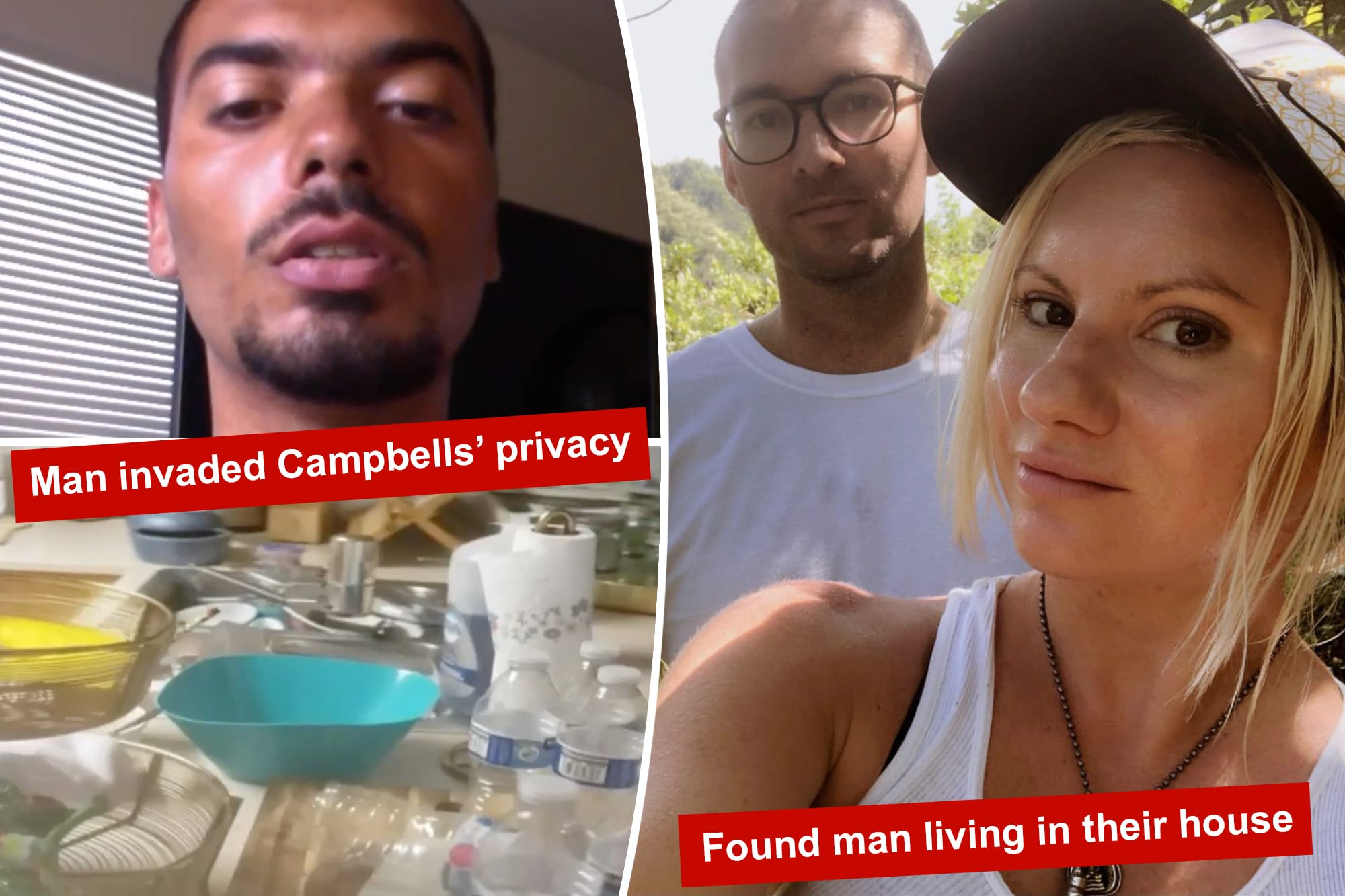Unveiling the Disturbing Trend of Phrogging: Your Guide to Understanding and Preventing Secret Home Invasions
Imagine this: you return home after a long day to find your belongings slightly out of place. Perhaps a faint, unfamiliar scent lingers in the air, or you notice a flicker of movement in your peripheral vision. While these occurrences might seem insignificant at first, they could be signs of something far more sinister: phrogging.
The term itself might sound like a prank from a teen horror movie, but phrogging is, unfortunately, a chilling reality for some unsuspecting individuals. It involves a person, often called a “phrog” or “phrogger”, secretly inhabiting someone else’s home without their knowledge or permission. They might stay for a few days, a few weeks, or even longer, lurking in the shadows and essentially living off their unknowing host.
What is Phrogging?
Phrogging, in its simplest terms, is the act of secretly living in another person’s home without their knowledge or consent. This differs from squatting, which typically involves unoccupied properties. The term “phrogging” is believed to have originated from the way frogs hop from place to place, as phroggers may move from house to house, targeting those that appear unoccupied or have vulnerabilities they can exploit.
Recognizing the Red Flags: Could You Be a Victim?
While the thought of someone secretly living in your home can be unsettling, it’s crucial to recognize the potential signs of phrogging. Early detection can be vital in putting a stop to this terrifying invasion of privacy. Here’s what to watch out for:
- Unexplained Noises: Have you noticed any scratching sounds, muffled voices, or footsteps when no one else should be home? These could be signs of a phrogger moving around in your home, especially during times they think you’re away.
- Disturbed Belongings: Take note if you consistently find items moved, food or toiletries missing, or unfamiliar objects appearing in your home. While these occurrences might seem insignificant on their own, their persistence could be a red flag.
- Physical Evidence: Regularly check less-frequented areas of your home like attics, crawl spaces, or basements for any physical evidence of an intruder. This could include footprints, cigarette butts, or trash that doesn’t belong to you.
The Psychological Impact: More Than Just a Crime
The experience of being a victim of phrogging extends far beyond the physical violation of one’s home. The psychological impact can be profound and long-lasting, leaving victims feeling vulnerable and unsafe in their own space.
Imagine the fear and anxiety of knowing someone has been watching your every move, touching your belongings, and essentially embedding themselves into your life without your consent. This violation of privacy can be incredibly disturbing, often leading to:
- Hypervigilance and Paranoia: Victims of phrogging may find themselves constantly on edge, feeling like they’re being watched even when they’re alone. This can lead to difficulty sleeping, concentrating, and engaging in everyday activities.
- Fear and Anxiety: The thought of someone secretly living in your home can trigger intense feelings of fear, anxiety, and even panic attacks. This fear can extend beyond the home, making it challenging to feel safe anywhere.
- Distrust and Betrayal: Phrogging can severely damage one’s sense of trust, not only in strangers but also in their own judgment and ability to keep themselves safe. This can make it difficult to form new relationships or even feel comfortable in social situations.
Phrogging: Beyond Urban Legend – Real Cases, Real Victims
While it might be tempting to dismiss phrogging as a far-fetched horror story, real-life cases paint a disturbing picture of this unsettling crime. Here are a few chilling examples that highlight the very real threat of phrogging:
- The Knoxville Incident: In a case that sent shockwaves through the Knoxville community, a homeowner made a horrifying discovery – a half-naked man had been secretly living in his crawlspace. What’s even more unsettling is that this phrogger wasn’t just seeking shelter; he was engaging in dangerous activities like cooking meth, putting the homeowner and the entire neighborhood at risk.
- The Brayden Woodhouse Case: This case, which unfolded in Cedar Rapids, showcases the serious legal repercussions of phrogging. Brayden Woodhouse was found guilty of breaking and entering, demonstrating that even if a phrogger doesn’t intend to harm the homeowner, their actions have severe consequences under the law.
- Madisyn Gidrey’s Story: Madisyn Gidrey, a brave survivor of phrogging, is set to share her terrifying experience on Lifetime’s “Phrogging: Hider in My House”. Her story sheds light on the profound psychological impact of this crime and serves as a stark reminder that phrogging can happen to anyone, anywhere.
Protecting Yourself: Steps to Deter Phroggers and Reclaim Your Peace of Mind
While the clandestine nature of phrogging makes it challenging to prevent entirely, there are proactive steps you can take to make your home less appealing to these unwelcome guests and enhance your overall security:
Strengthen Home Security:
- Invest in a comprehensive home security system that includes an alarm, motion sensors, and security cameras. Visible cameras can act as a deterrent, while motion sensors can alert you to any unusual activity in and around your property.
- Ensure all entry points, including doors, windows, and even crawl spaces, are properly secured with sturdy locks.
- Install motion-sensor lights around your property, especially in dark or hidden areas. These lights can deter potential intruders and alert you to any suspicious activity.
Be Observant and Trust Your Instincts:
- Regularly inspect your property for any signs of intrusion, paying close attention to areas that are often overlooked, such as basements, attics, and crawl spaces.
- Don’t dismiss any unusual occurrences or gut feelings. If something feels off, it’s always better to err on the side of caution and investigate further.
Engage Your Community:
- Establish a neighborhood watch program or connect with your neighbors to create a network of support and shared awareness. By looking out for each other and reporting any suspicious activity, communities can create a safer environment for everyone.
Report Suspicious Activity:
- If you notice any signs of a potential phrogger or any other suspicious activity around your home, don’t hesitate to contact the authorities immediately. Your prompt action could prevent a crime and help bring perpetrators to justice.
Remember, knowledge is power. By understanding the reality of phrogging, recognizing the warning signs, and taking proactive steps to secure your home and engage your community, you can significantly reduce your risk of becoming a victim and reclaim your peace of mind.
Delving Deeper: Untapped Potential and Unique Insights
While the information presented here provides a comprehensive overview of phrogging, there are many avenues for further exploration and research. Here are a few areas that warrant deeper investigation:
- The Psychological Profile of a Phrogger: What motivates individuals to engage in this highly invasive and unsettling behavior? Are there common psychological traits or past experiences that contribute to phrogging? Conducting in-depth research into the minds of phroggers could provide valuable insights into prevention and intervention strategies.
- Phrogging in the Digital Age: How has technology, particularly home security cameras and social media, influenced the detection and perpetuation of phrogging? Are there online communities where phroggers share tips and target potential victims? Exploring the intersection of phrogging and technology could reveal new trends and challenges in addressing this crime.
- Legal Loopholes and the Need for Stricter Legislation: Are existing laws sufficient to deter and prosecute phrogging effectively? Are there legal loopholes that phroggers exploit? Analyzing the legal landscape surrounding phrogging could lead to advocating for stricter legislation and improved legal frameworks to protect potential victims.
By continuing to shed light on this disturbing phenomenon, promoting awareness, and advocating for stronger preventative measures, we can work together to create a safer and more secure environment for everyone.
Internal Links:
- Do you wonder what the infamous drug lord looked like in his final moments? Check out the pictures of dead Pablo Escobar.
- To explore the deplorable living conditions of the Great Depression, dive into the what were the hoovervilles article.
- Unlock Elemental 2 Secrets: Actionable Insights Now - April 2, 2025
- Lot’s Wife’s Name: Unveiling the Mystery of Sodom’s Fall - April 2, 2025
- Photocell Sensors: A Complete Guide for Selection and Implementation - April 2, 2025

















1 thought on “Unmasking the Intrusion: What is Phrogging and How to Protect Yourself”
Comments are closed.